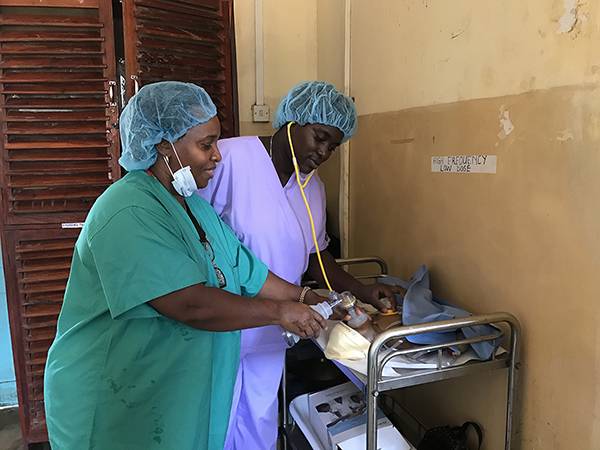You are here
Helping Babies Breathe in Tanzania
Estimates indicate that 60-70 percent of infant deaths in Tanzania occur during the first hour of life. Of those deaths, about one-third are due to birth asphyxia, a condition where the baby does not get enough oxygen from the placenta during the birthing process. This condition can be harmful to the infant’s brain and is often fatal. According to global estimates, birth asphyxia is the most common cause of perinatal death (stillbirth or early neonatal death) in Tanzania. Furthermore, this condition is less likely to be treated in rural, poor and developing nations such as Tanzania with fewer health resources.
Helping Babies Breathe (HBB) is a low-cost, global initiative created in 2009 that seeks to reduce deaths due to birth asphyxia and other respiratory complications that could occur at birth. These life-saving techniques include infant stimulation, suction of the nose and mouth when appropriate, and the use of a bag-valve-mask to improve breathing and to circulate oxygen. The CDC Foundation supports the U.S. Centers for Disease Control and Prevention (CDC) in closely monitoring HBB implementation in the Kigoma region of Tanzania. HBB is implemented in Kigoma in partnership with Thamini Uhai, a Tanzanian non-governmental organization that works on improving maternal and newborn health. Kigoma is a resource-limited region where maternal and neonatal deaths have been higher than other regions in the country.
Although the HBB technique itself can be very effective, the manner in which the training is conducted is key to its effectiveness. Studies show that a single session of HBB training makes little or no difference to the care provided or to the rate of infant death. To see an impact on reduction of deaths during the birthing process, delivery care providers must be trained and exposed to the material repeatedly over long periods of time.
This approach is termed the High Frequency Low Dose method. Through this method, delivery care providers are mentored by facility-based champions through an initial one-day training, followed by daily practice sessions at their health care facilities. Additionally, the trainees receive refresher workshops and are frequently retested on their skills.
The first pilot of the High Frequency Low Dose method in HBB in Tanzania showed a 47 percent reduction of neonatal deaths and a 24 percent reduction in fresh stillbirths after its implementation in 2009. After implementation of the method in participating hospitals and health care facilities in Kigoma Region, CDC documented a 17 percent reduction in perinatal deaths before discharge compared with the pre-implementation period. The High Frequency Low Dose HBB study in Kigoma Region is part of the Maternal and Reproductive Health in Tanzania program, supported by a grant from Bloomberg Philanthropies and Fondation H&B Agerup.
At the CDC Foundation, we are excited about the success of using the High Frequency Low Dose method to reduce perinatal deaths in Tanzania.

